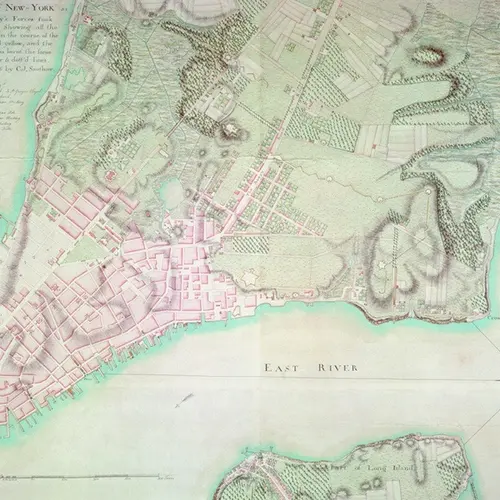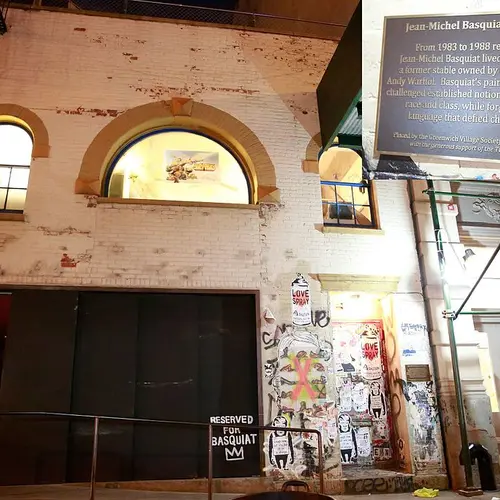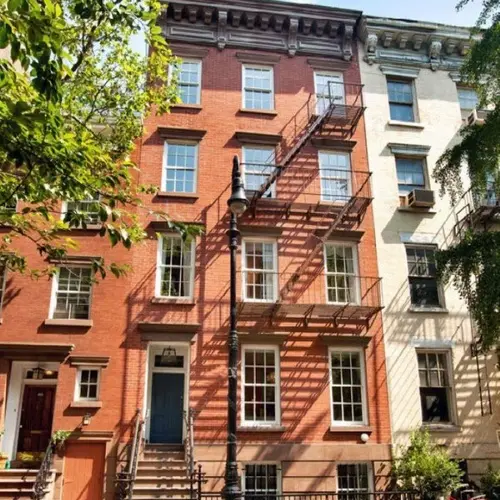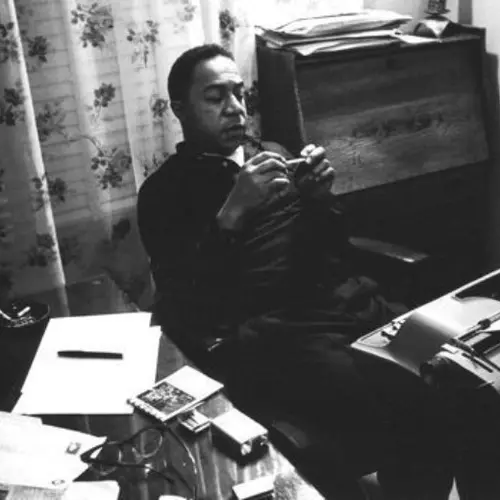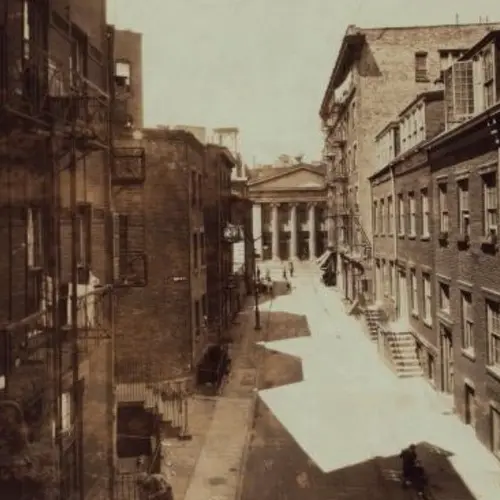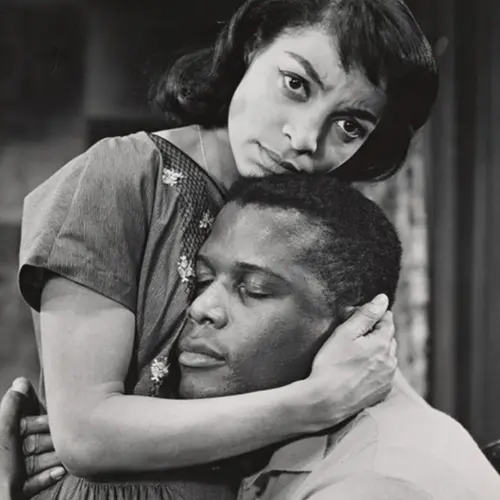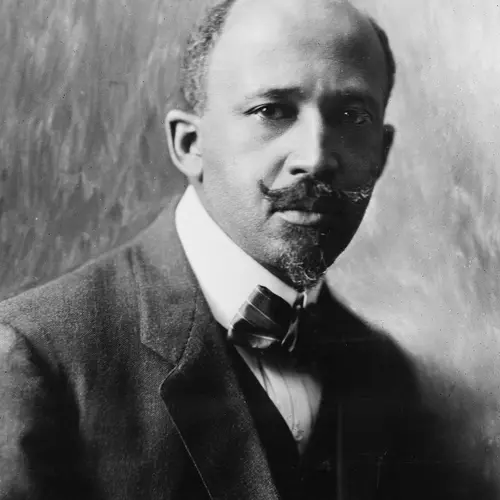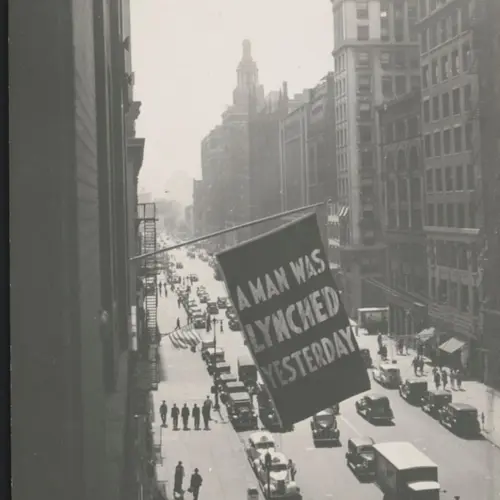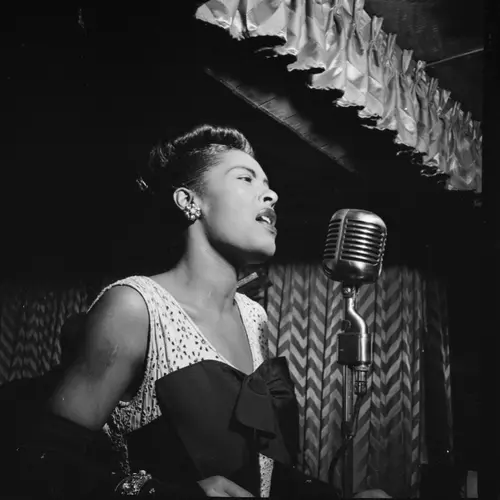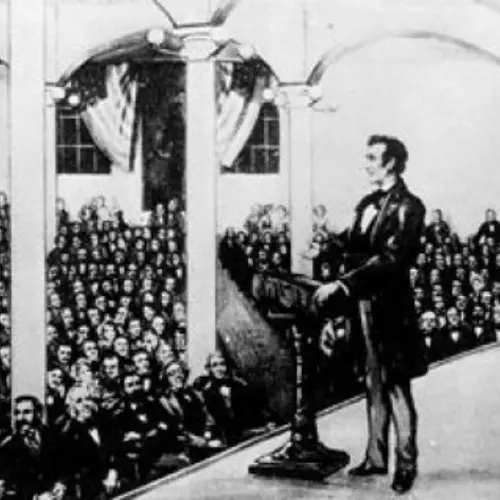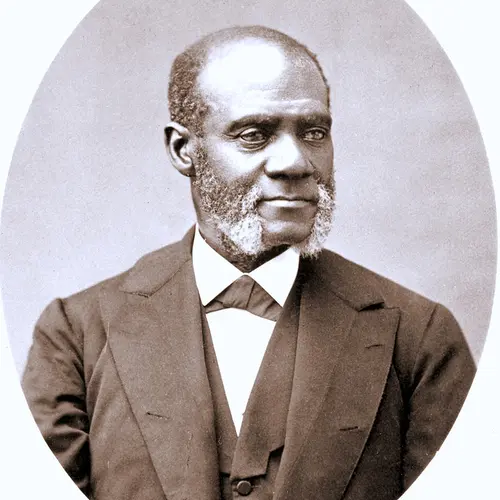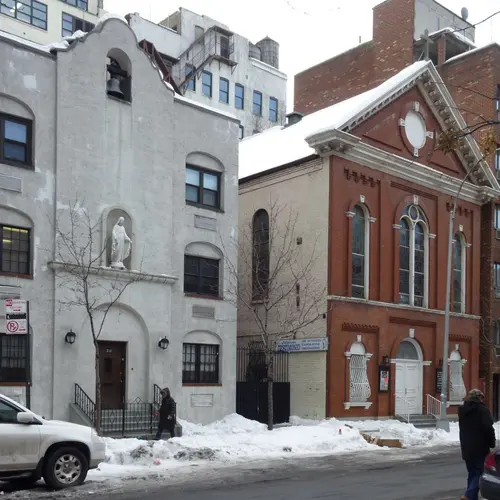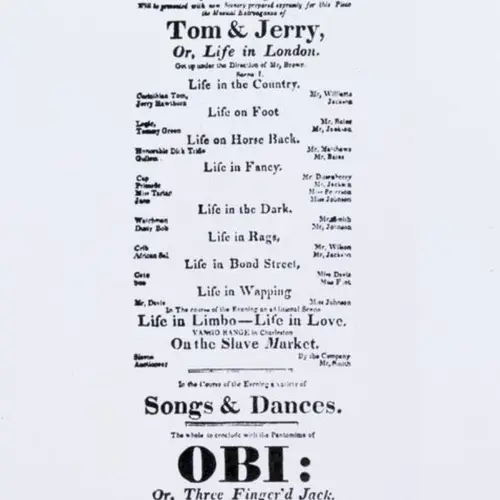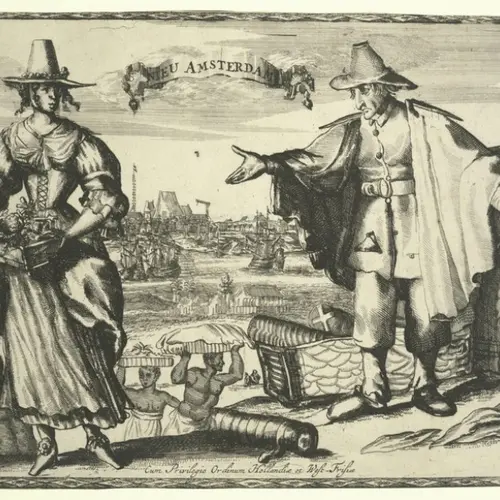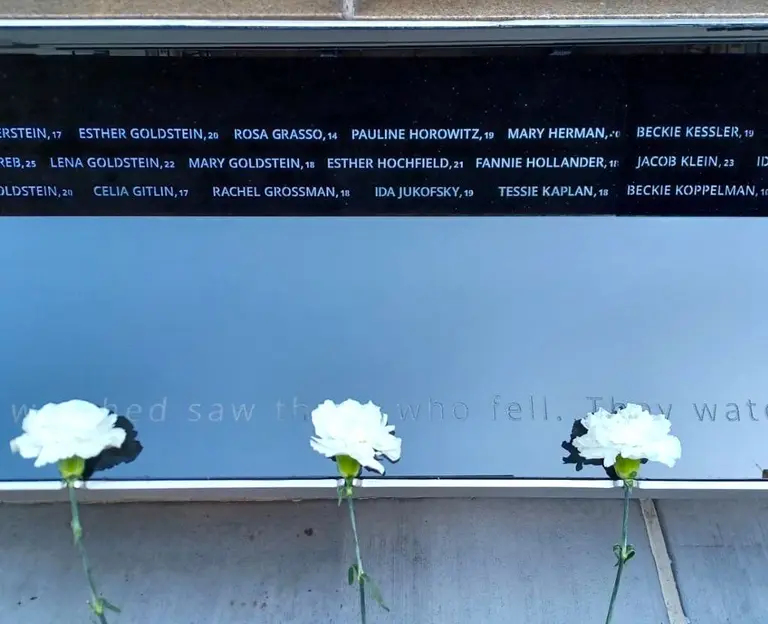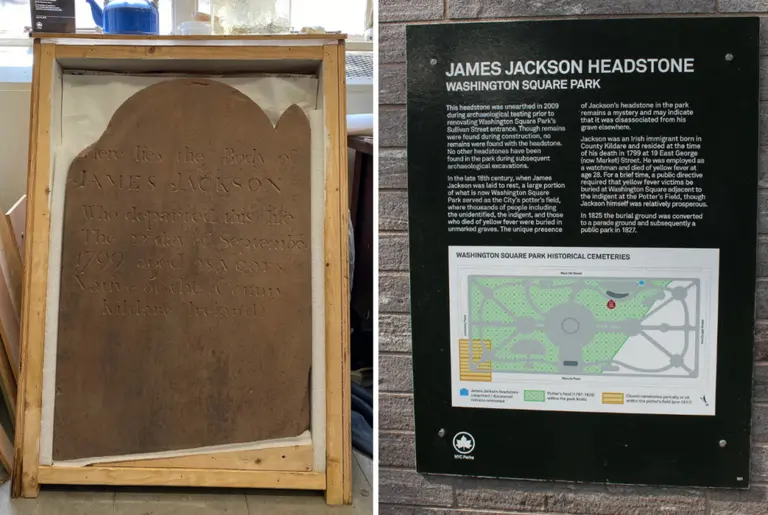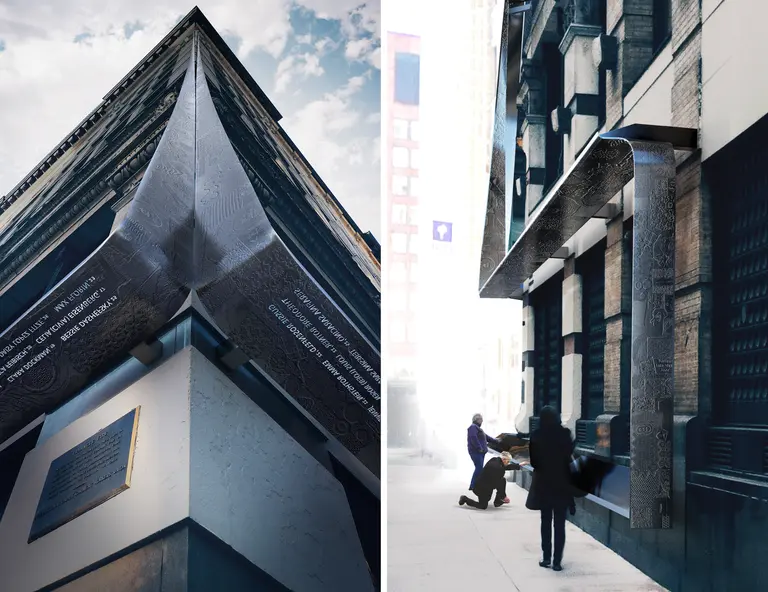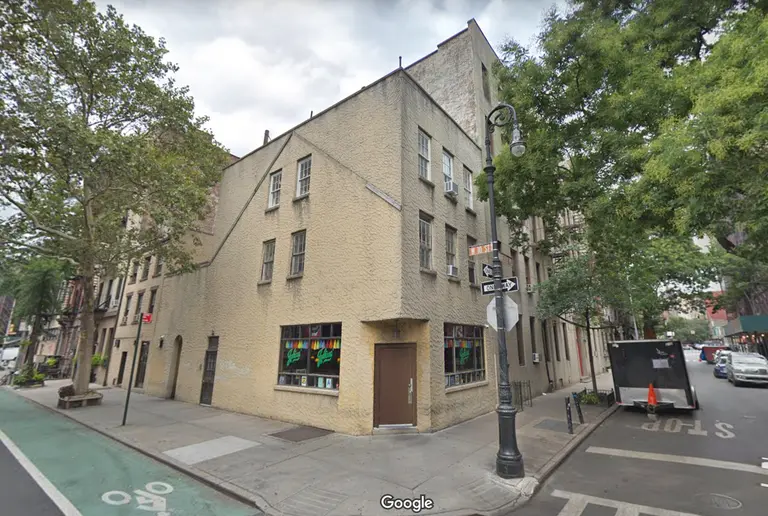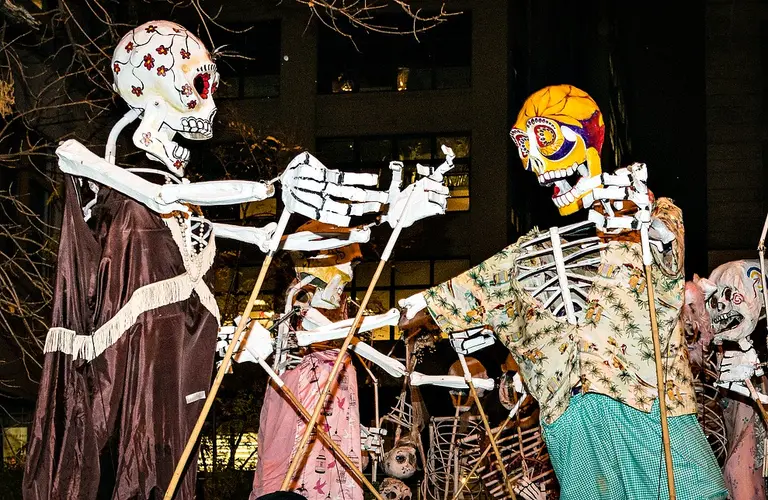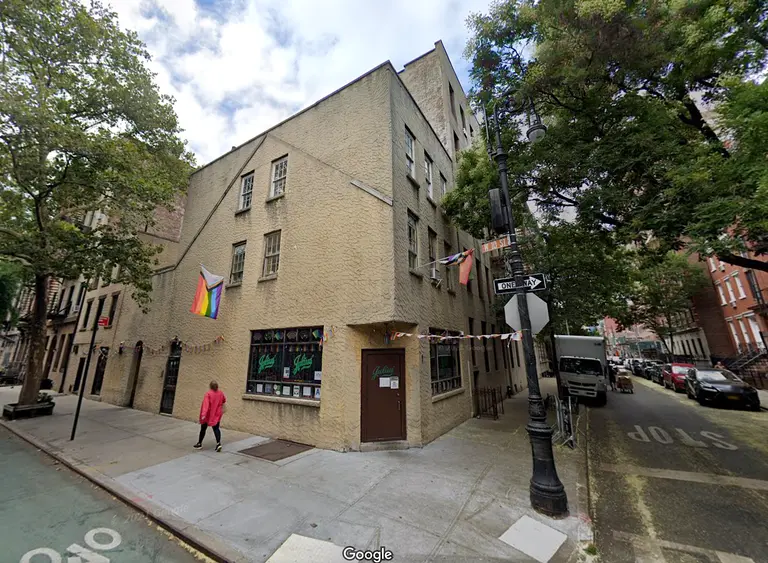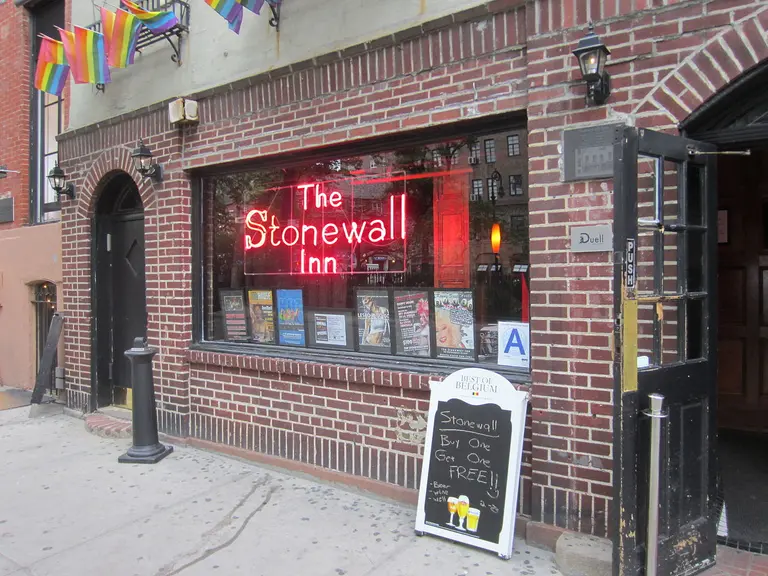Black history in Greenwich Village: 15 sites related to pioneering African-Americans
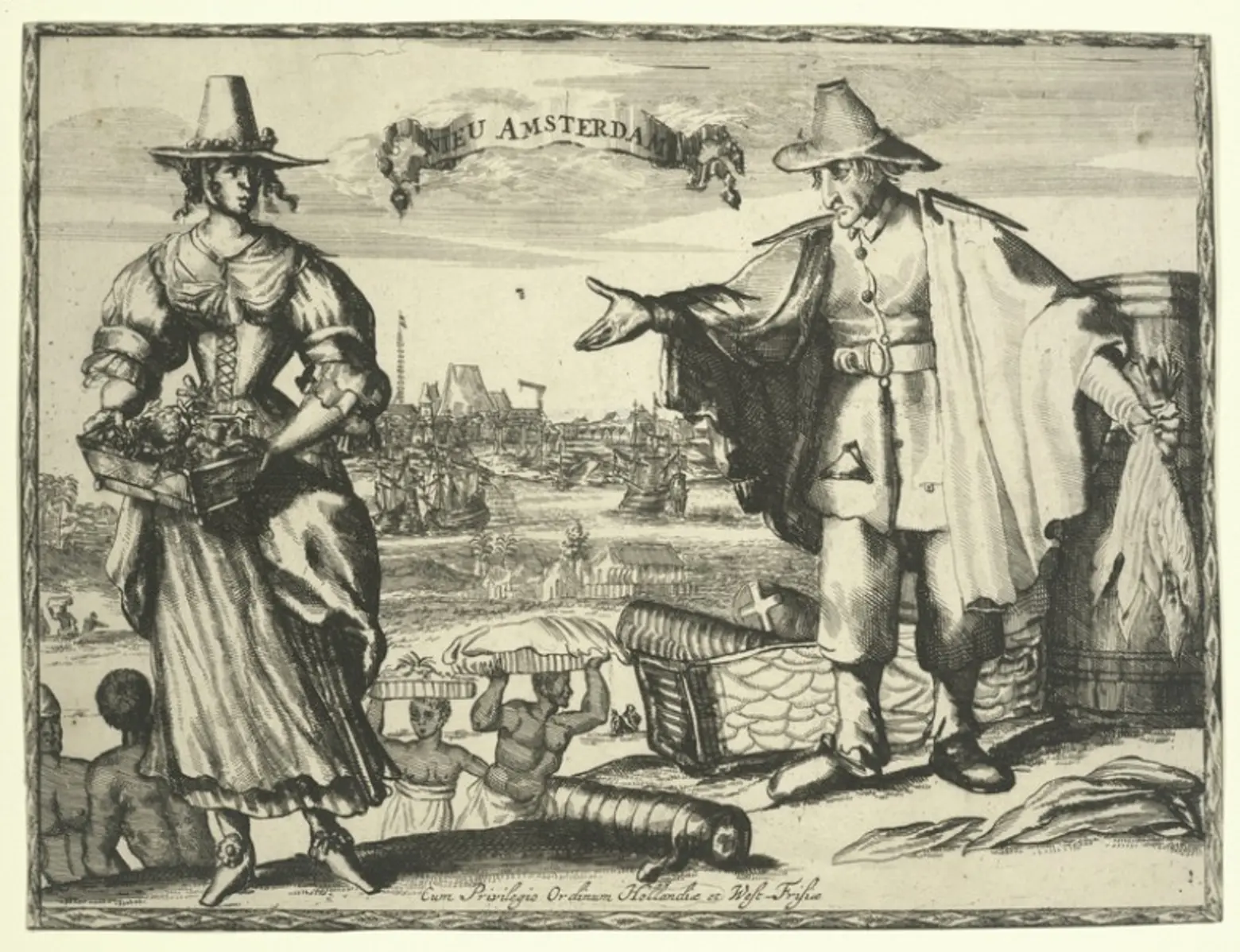
Image via Wikimedia
Greenwich Village has been known throughout its existence for breaking new ground and embracing outsiders. One often-forgotten but important element of that trailblazing narrative is the extraordinary role the Village played in relation to African American history. The neighborhood was home to North America’s earliest free Black settlement in the 17th century, to some of America’s first black churches in the 19th century, and many pioneering African-American artists, civil rights leaders, and organizations in the 20th century. This Black History Month, here are just a few of the exceptional Greenwich Village sites connected to African-American history.
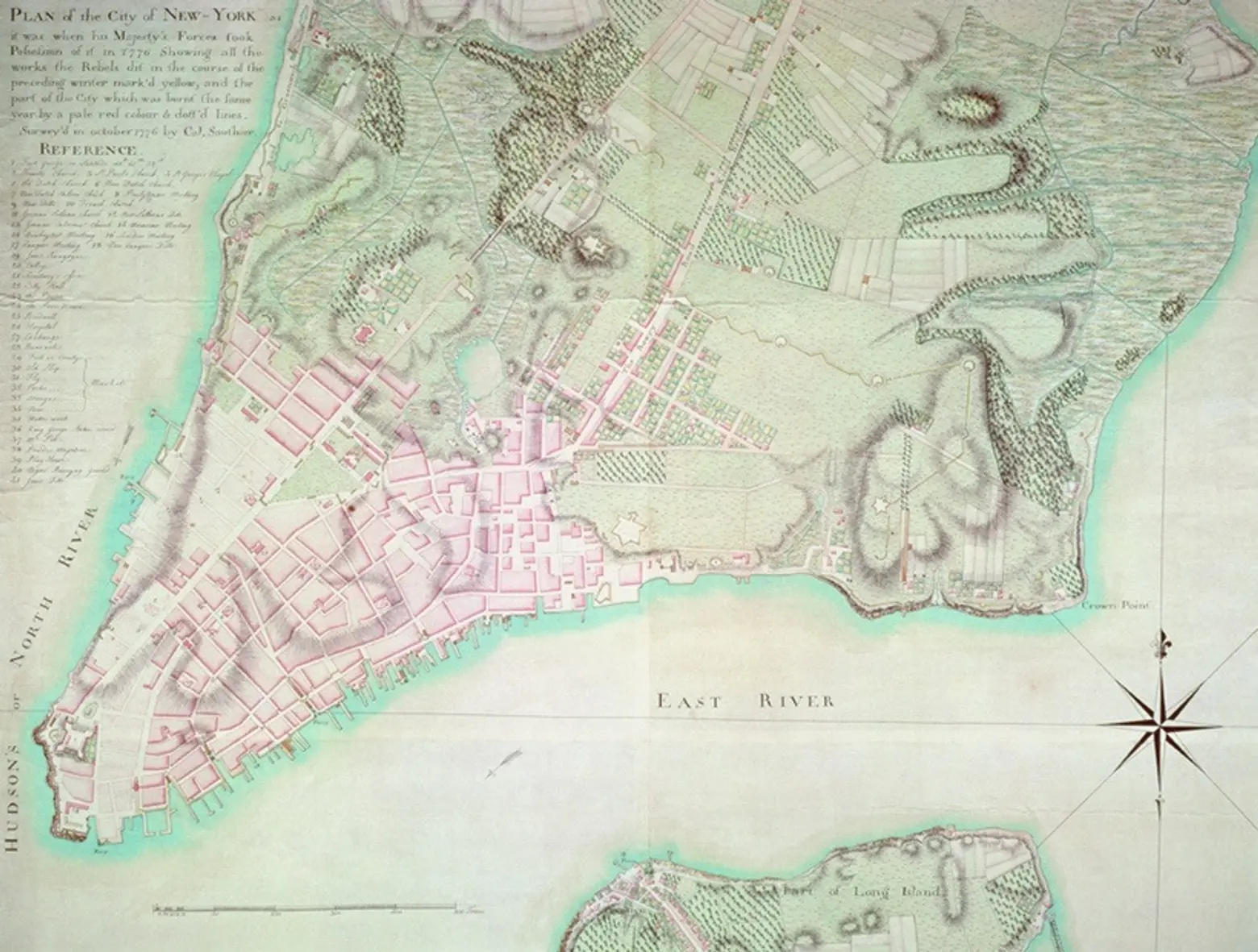
Plan of New York; courtesy of Curriculum Concepts International
1. The First Free Black Settlement in North America
According to historian Christopher Moore, the first legally emancipated community of people of African descent in North America was a set of landholdings owned by about thirty freed slaves located in present-day Greenwich Village and parts of the Lower East Side and Lower Manhattan beginning in the 1640s.
This land belonged to former “company slaves” of the Dutch West India Company, both men and women, who had been manumitted as early as within twenty years of the founding of New Amsterdam. In some cases, these free black settlers were among the very first Africans brought to New Amsterdam as slaves in 1626, two years after the colony’s founding, many of whom successfully petitioned for their own freedom. They were granted parcels of land by the Council of New Amsterdam, under the condition that a portion of their farming proceeds go to the Company. They were granted this land under the guise of a reward for years of loyal servitude, but in reality, these parcels served as a buffer between the European settlement in the closely guarded and defended southern tip of Manhattan, and Native Americans, who might conduct raids and attacks from the north.
This settlement’s status did not remain permanent, however. When the English captured the colony of New Amsterdam and renamed it New York in 1664, the English government demoted free blacks from property owners to legal aliens, denying them landowning rights and privileges. Within twenty years, a vast majority of land owned by people of African descent was seized by wealthy white landowners who turned these former free black settlements into retreats, farms, and plantations.
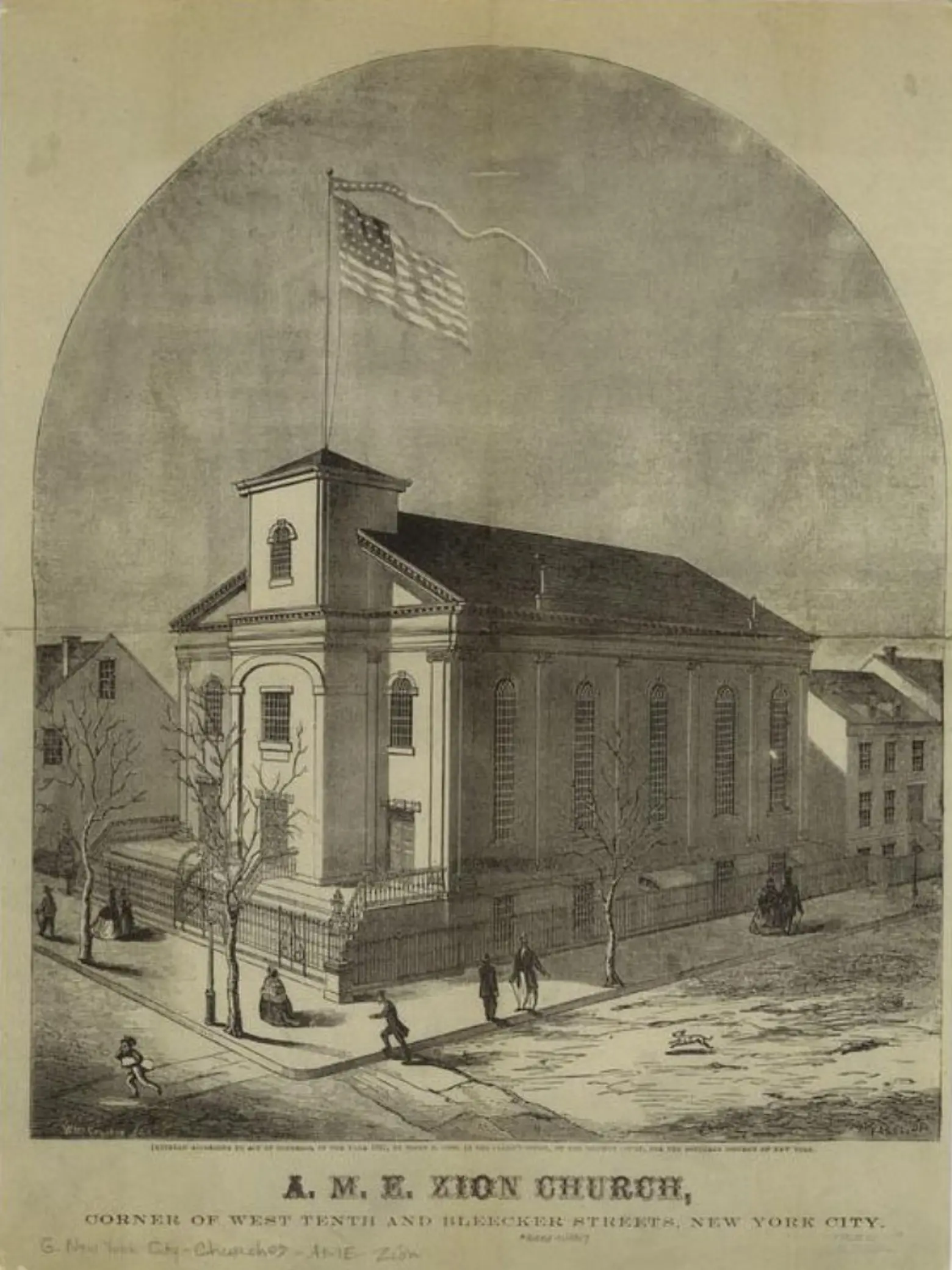
Mother AME Zion; courtesy of NYC AGO
2. Mother Zion A.M.E. Church, The First Black Church in New York City
At the corner of West 10th Street and Bleecker Street stood the third home of Mother Zion African Methodist Episcopal Church, the founding congregation of the Zion African Methodist Episcopal (AME) church, the very first black church in New York City. Zion AME had a profound effect on African-American life and has been a force for abolition and civil rights since the late 18th century. It was also home to some of the most prominent African-American civil rights leaders, including Sojourner Truth, Harriet Tubman, and Frederick Douglass. Zion AME relocated here at the height of the Civil War from prior locations in Lower Manhattan, reflecting the migration of the center of African-American life in New York uptown and into the Village in the 19th century. The church moved from here to Harlem in the early 20th century and was replaced by the pair of tenement buildings that occupy the site today.
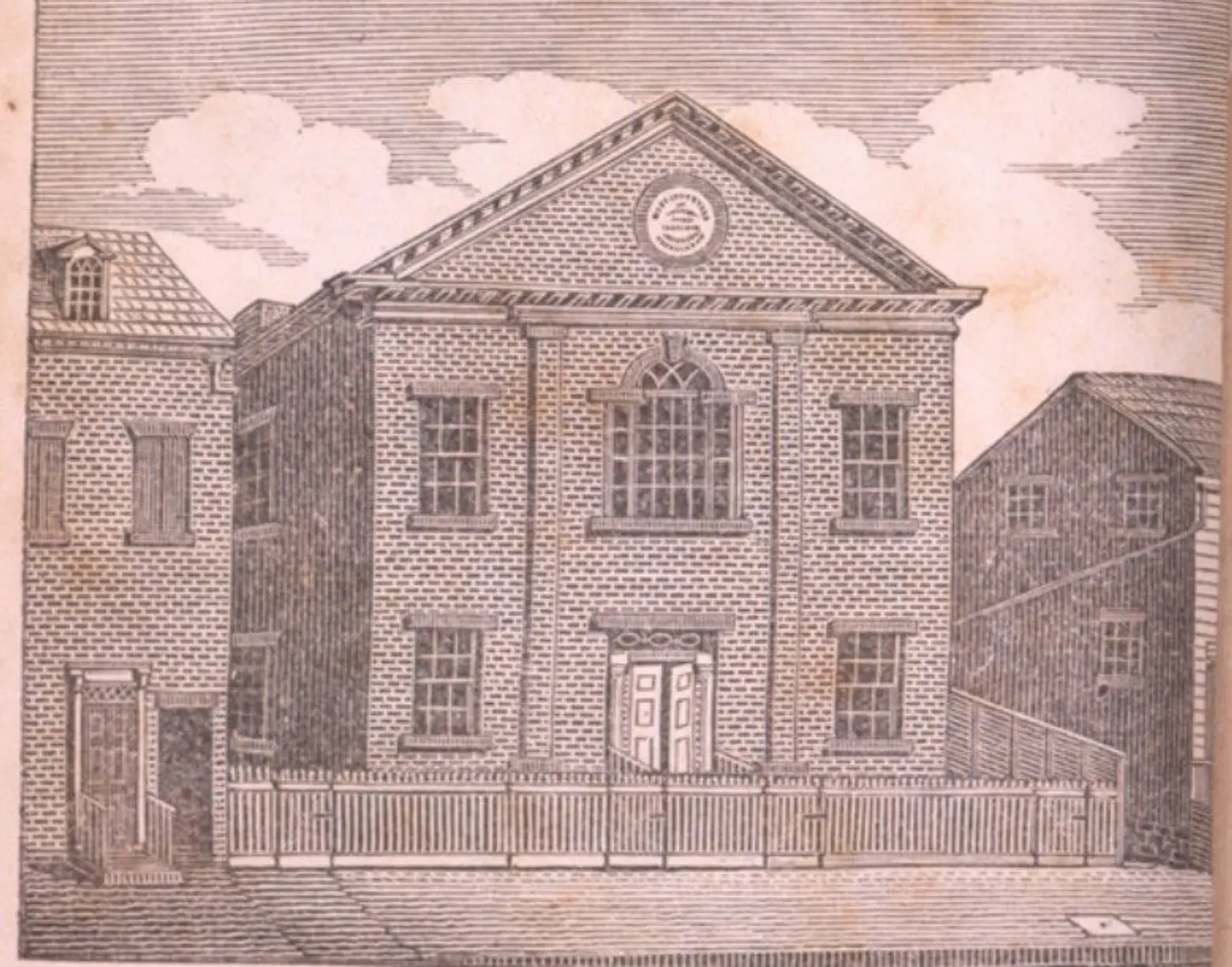
NY African Free School, drawn by a student; via Schomburg Center for Research in Black Culture
3. The first school for Blacks in America, the African Free School
African Free School No. 3 was located at 120 West 3rd Street (formerly 120 Amity Street). This was one of seven schools dedicated to the education of the children of free and enslaved blacks in the late 18th and early 19th centuries. The first African Free School, founded in 1787 by the New York Manumission Society, was the very first school for blacks in America. The first African Free School, a one-room schoolhouse located in lower Manhattan, was established in 1794 and held about 40 students, the children of both free and enslaved blacks who were taught reading, writing, arithmetic, and geography. After a fire destroyed the original building, a second school was opened in 1815 on Mulberry Street and held 500 students. African Free School No. 3 was established on 19th Street near 6th Avenue; however, after objections from whites in the area, it was relocated to 120 Amity Street (now 120 West 3rd Street). By 1834 the seven existing African Free Schools, with enrollment surpassing a thousand students, had been absorbed into the public school system.
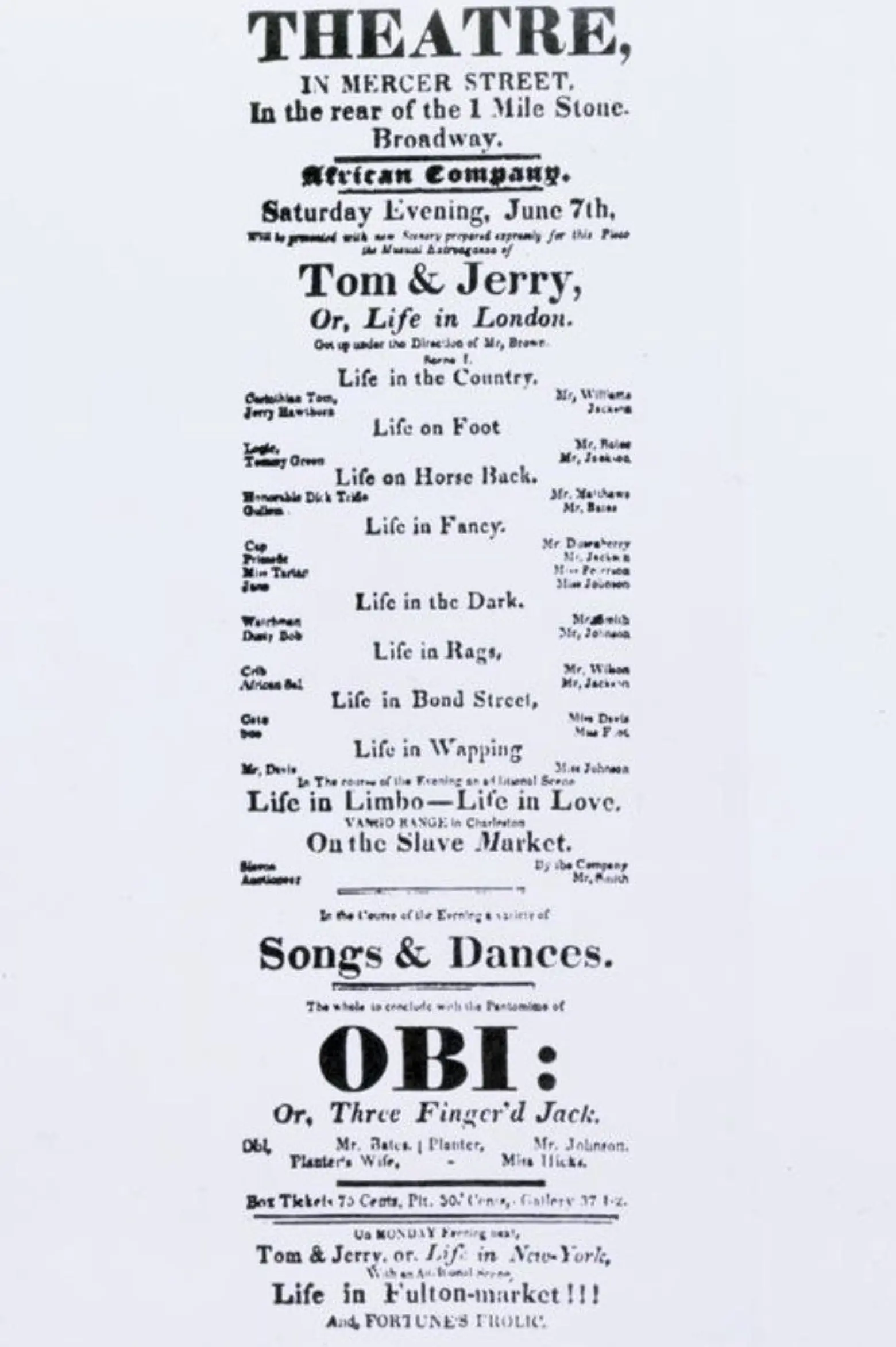
Playbill from the African Grove Theatre (1821); via NYPL
4. The First Known Black Theater Troup, the African Grove Theater
The African Grove Theater was located at the corner of Mercer and Bleecker Streets and founded by William Alexander Brown, a free African American and pioneering actor and playwright. Through his work as a ship’s steward, Brown traveled extensively through England and the Caribbean, where he was exposed to different types of theater. Upon his return to New York City, he founded the African Company in a house he bought at 38 Thompson Street. The company originally met in his backyard, but complaints forced him to move to several locations along Mercer Street. At the Theater, Shakespearean plays were performed, as well as original works. The African Company and the African Grove Theater were disbanded in 1823 as a result of financial distress and city intervention. City officials shut it down in response to complaints about the behavior of African-American theatergoers; behavior that was considered normal when displayed by working-class white patrons.
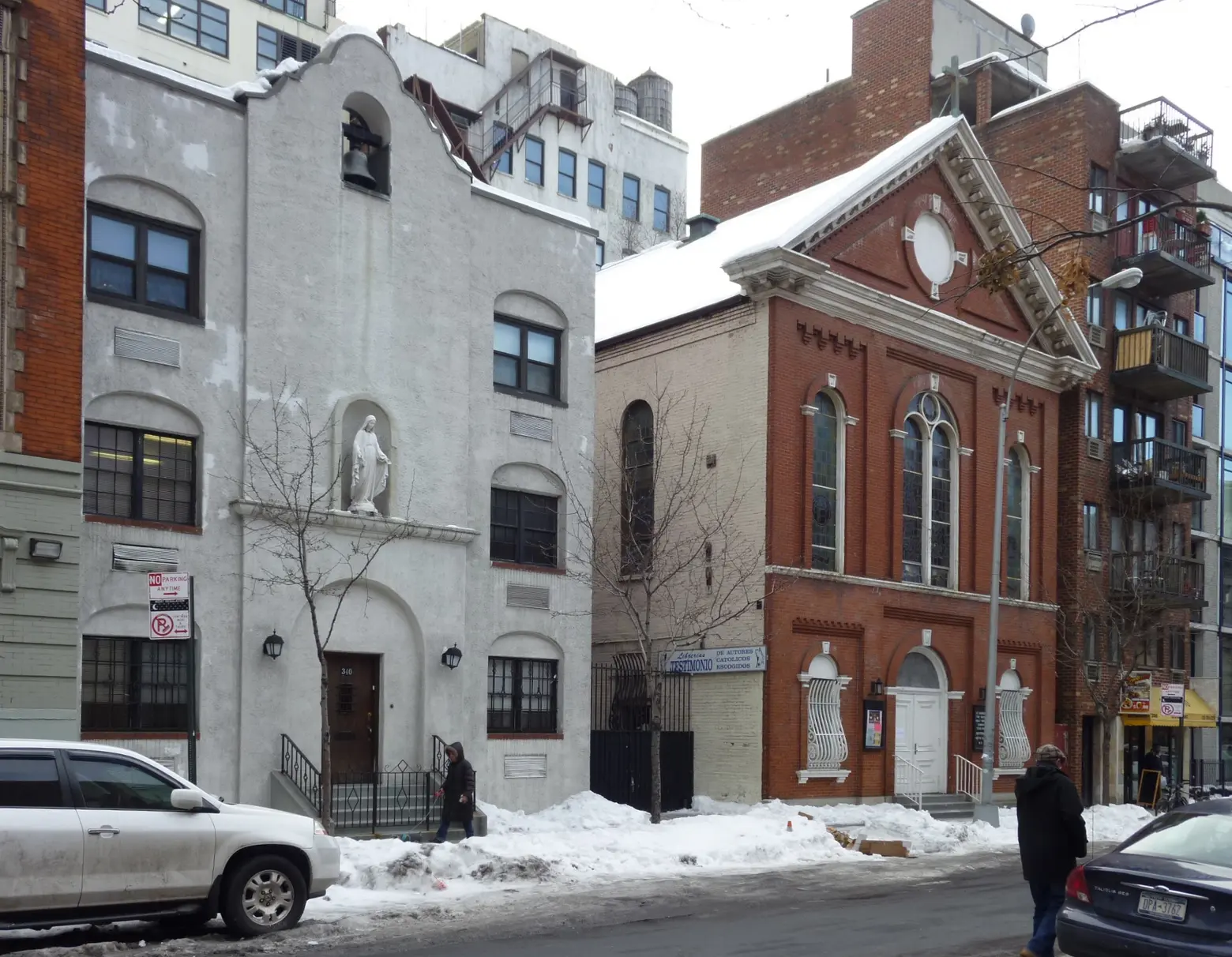
The relocated church on West 53rd Street was built in 1965; photo via Wikimedia
5. First Black Catholic Church in the North, St. Benedict the Moor Church
On November 18, 1883, the Church of St. Benedict the Moor was dedicated at 210 Bleecker Street, in the heart of the predominantly African-American section of Greenwich Village then known as ‘Little Africa.’ It was the first church in the North for black Roman Catholics. The Church building was a monumental Greek Revival temple-like structure first built in 1836 for the Third Universalist Society. The Church of St. Benedict was named for a 16th-century African-born friar. The church was initially funded by money left in the will of the Reverend Thomas Farrell, pastor of St. Joseph’s Church on Sixth Avenue and one of the earliest priests to advocate racial equality. The will stipulated that if such a church for blacks was not founded within three years, the $5,000 seed money would instead to go to a Protestant orphanage. By 1898, the church moved to a new location at West 53rd Street, following the migration of the black population uptown, and was taken over by the predominantly Italian-American Our Lady of Pompeii congregation. The beautiful church building was later demolished due to the extension of Sixth Avenue in 1926.

Henry Highland Garet; image via Wikimedia
6. First African-American to Address Congress
African American abolitionist, minister, educator, and orator Henry Highland Garnet, the first African-American to address the United States House of Representatives, lived at 185 Bleecker Street. Born into slavery in 1815, his entire family escaped from bondage in 1824 under the guise of attending a funeral, eventually arriving in New York City, where he attended African Free School No. 2. Garnet became a pastor, a prominent abolitionist speaker, and a member of the American Anti-Slavery Society. His radical message included encouraging slaves to rise up against their masters. On February 12, 1865, in the final weeks of the Civil War, the Rev. Dr. Henry Highland Garnet became the first African-American to address the U.S. House of Representatives when he delivered a sermon commemorating the victories of the Union army and the deliverance of the nation from slavery. He had been invited by President Lincoln with the unanimous consent of his cabinet and the two congressional chaplains for a special Sunday service held on President Lincoln’s birthday. In 1881 Garnet was appointed U.S. Minister to the African nation of Liberia, founded by freed U.S. slaves, but died a mere two months after his arrival there.
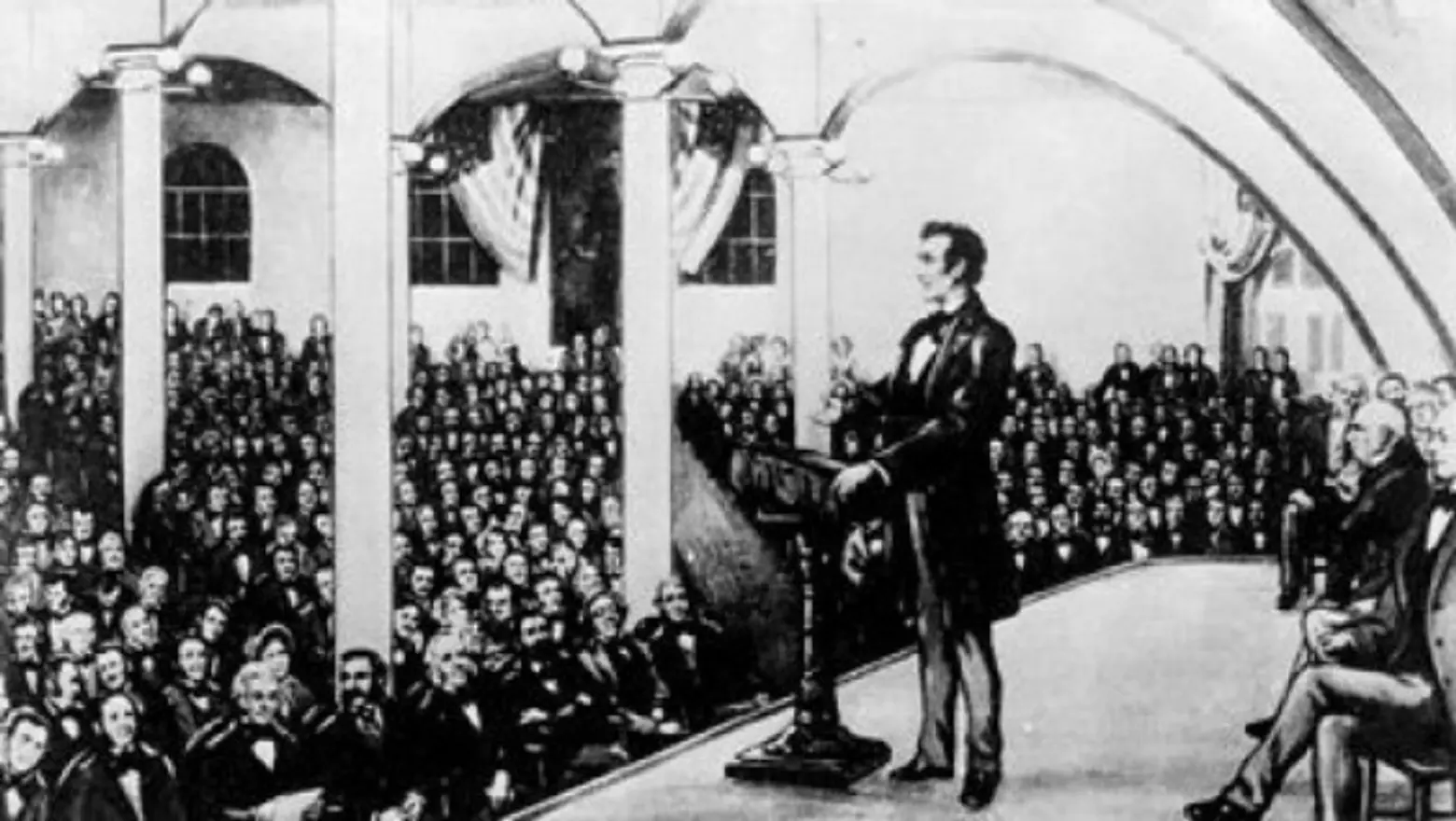
President Lincoln delivered his Cooper Union Address on Feb. 27, 1860; photo via Cooper Union
7. First Public Meeting of the NAACP
Cooper Union’s Great Hall is the site of many important moments in African-American history. In 1909 it was the site of the first public meeting of the newly-founded National Association for the Advancement of Colored People (NAACP). Founded by abolitionist Peter Cooper in 1859, Cooper Union’s Great Hall also the site of candidate Abraham Lincoln’s 1860 speech which is credited with launching him to the presidency, and Frederick Douglass’ famous 1863 speech following the Emancipation Proclamation.
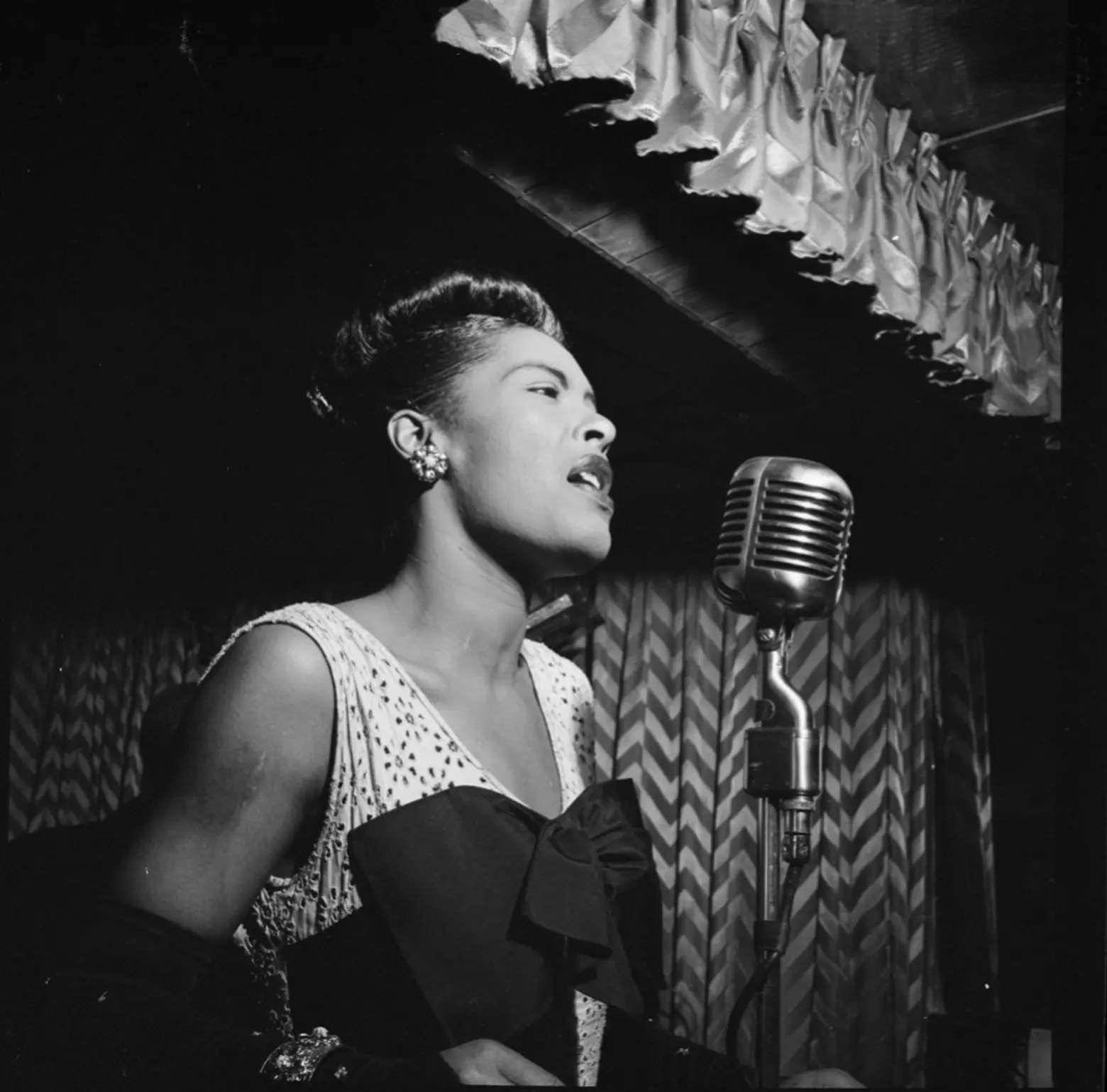
Billie Holiday singing “Strange Fruit” for the first time at Cafe Society; photo via Library of Congress
8. The First Racially-Integrated Nightclub in New York City/First Public Performance by Billie Holiday of “Strange Fruit”
Opened in 1938, the Cafe Society at 1 Sheridan Square was the first racially integrated nightclub in New York City. Though it was only open for a little over a decade (the building still stands), Cafe Society welcomed some of the biggest talents in jazz history during its time in operation, including Lena Horne, Sarah Vaughan, and Billie Holiday. It was here that Holliday first performed “Strange Fruit”, an explicit song of protest against lynching and racism.
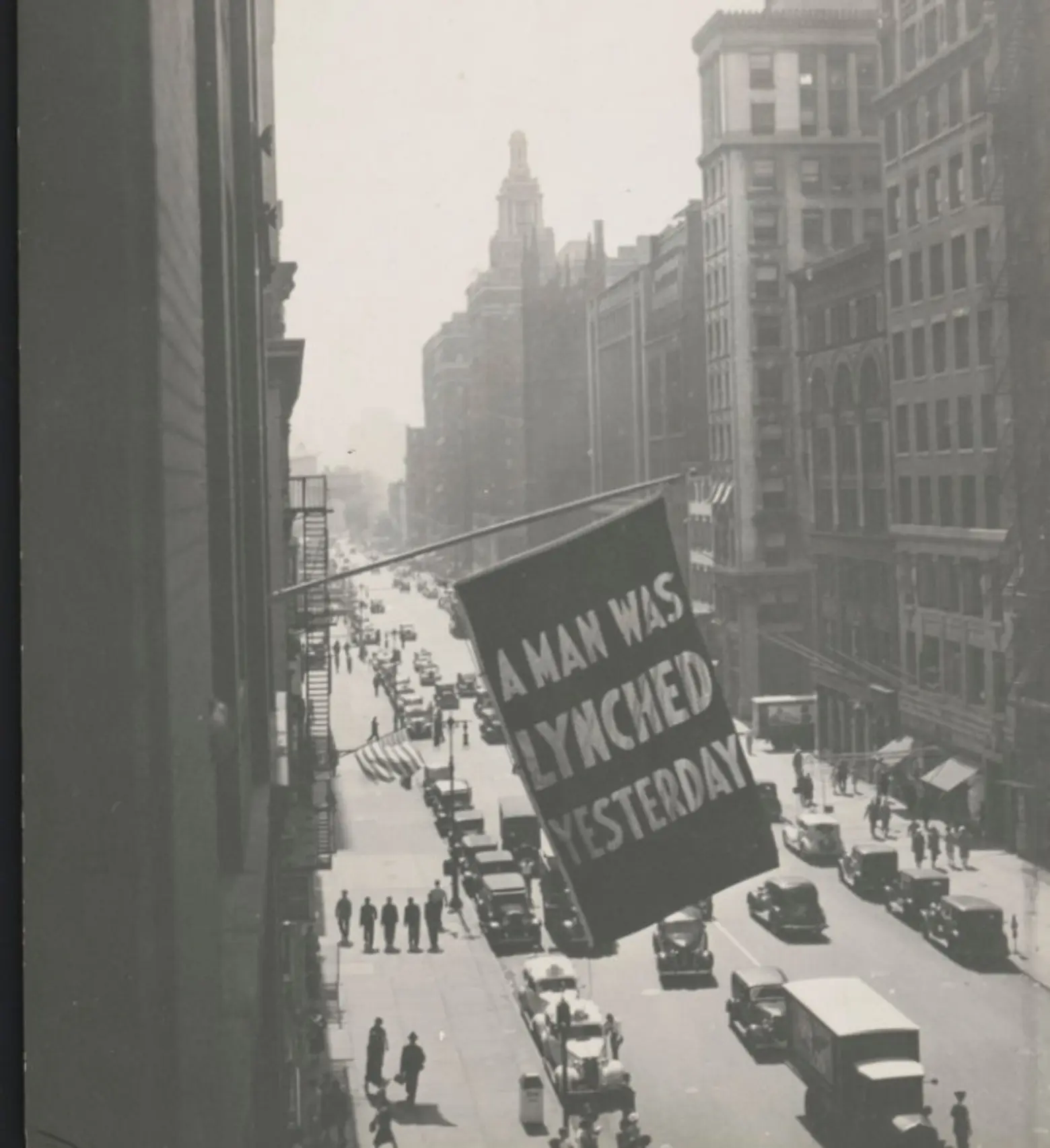
Flag, announcing lynching, flown from the window of the NAACP headquarters on 69 Fifth Ave (1936); via Library of Congress
9. “A Man Was Lynched Yesterday” Flag
For decades the headquarters of the NAACP was located at 69 Fifth Avenue, on the north side of 14th Street. As part of its anti-lynching campaign in the 1930s, the NAACP would frequently fly a flag out its window which said in stark white letters against a black background “A Man Was Lynched Yesterday” whenever such a horrific crime took place. The flag was clearly visible to thousands of passersby up and down Fifth Avenue in Greenwich Village and to the north. In 1938 the owners of the building threatened the NAACP with eviction if they did not take down the flag, forcing its removal.
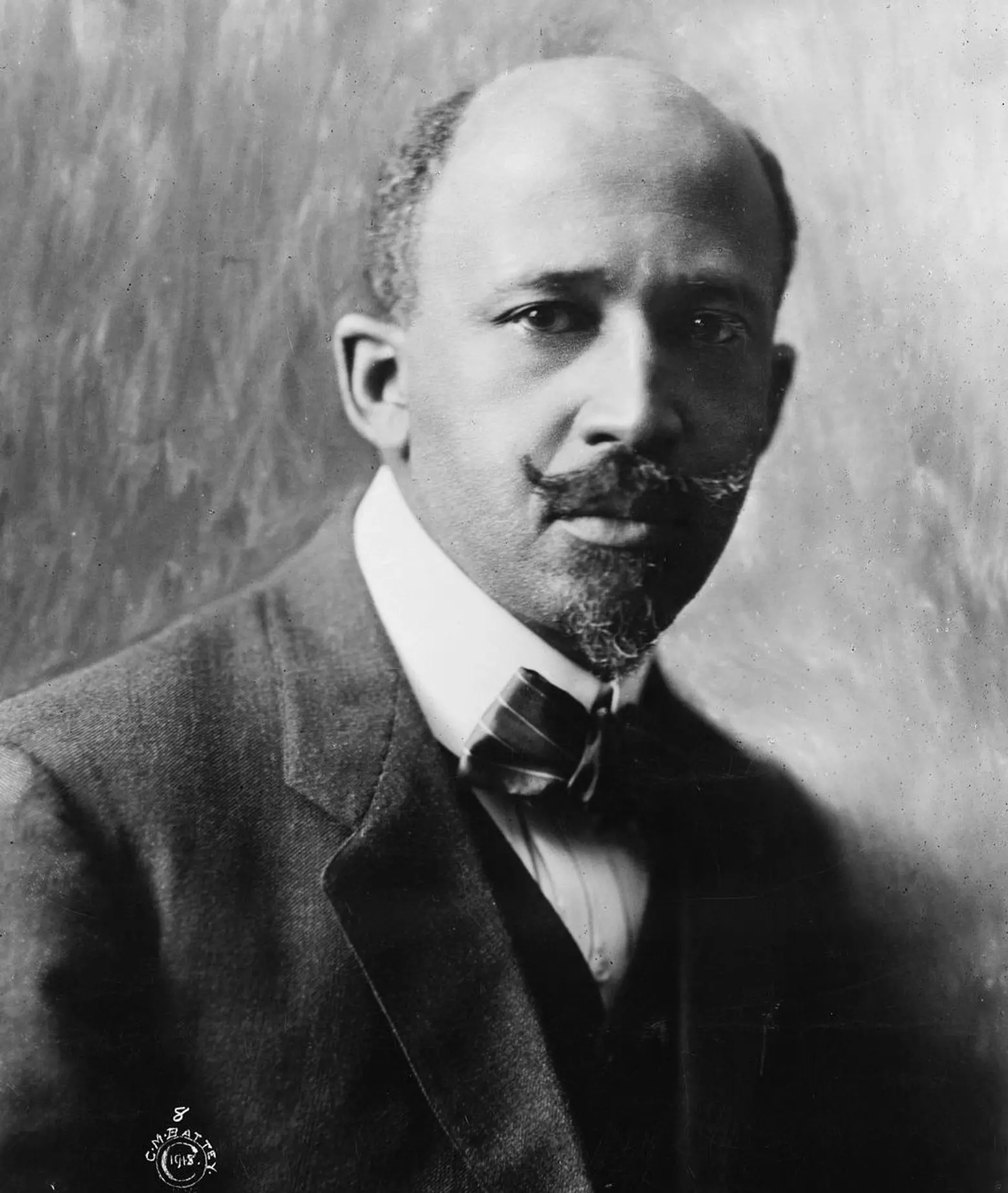
W.E.B. Du Bois; photo via Wikimedia
10. First Course in African-American History Taught
In 1948, sociologist, historian, civil rights activist and Pan-Africanist W.E.B. DuBois taught the very first class on African American history at the New School on West 12th Street. Called “The Negro in American History” the course description simply said it would “follow the development of American history with a special emphasis upon the influence which persons of Negro descent have had upon the thoughts and activities of this country.”

Ruby Dee and Sidney Poitier in the original Broadway production of “A Raisin in the Sun” (1959); photo via NYPL
11. First Black Woman to Have Her Play Produced on Broadway
Lorraine Hansberry’s award-winning play ‘A Raisin in the Sun’ about the struggle of an African-American family on the segregated South Side of Chicago was the first play produced on Broadway written by an African-American woman. Hansberry lived in an apartment at 337 Bleecker Street in the late 1950s when she wrote Raisin and used the proceeds from its success to buy the home at 112 Waverly Place in 1960, which she owned until her death in 1965. Hansberry was actively involved in the NAACP and raised funds to form a Greenwich Village chapter of the organization.

Minetta Street, the center of “Little Africa,” 1925; photo via NYPL
12. First National Holiday to Honor an African-American
Howard Bennett was one of the last black residents of Greenwich Village’s ‘Little Africa’ community centered around Minetta Street, which had all but disappeared by the second decade of the 20th century as New York’s primary African-American community moved uptown and it became easier for African-Americans to live throughout Greenwich Village beyond the confines of ‘Little Africa’. Born in a tenement at 11 Greenwich Avenue (since demolished), Bennett’s family moved to Harlem while he was still quite young. Labor Chairman of the New York Branch of the N.A.A.C.P. and consultant and confidant of labor leader of A. Philip Randolph, after attending Martin Luther King’s funeral in 1968 Bennett conceived of the idea of making the civil rights leader’s birthday a national holiday. He campaigned tirelessly until his death in 1981 for the King Holiday’s adoption, which at the time of his death was recognized by several states but still failed to pass Congress. It was two years after Bennett’s death that the national holiday was enacted by a veto-proof majority vote in Congress, necessary given President Reagan’s opposition to the bill.
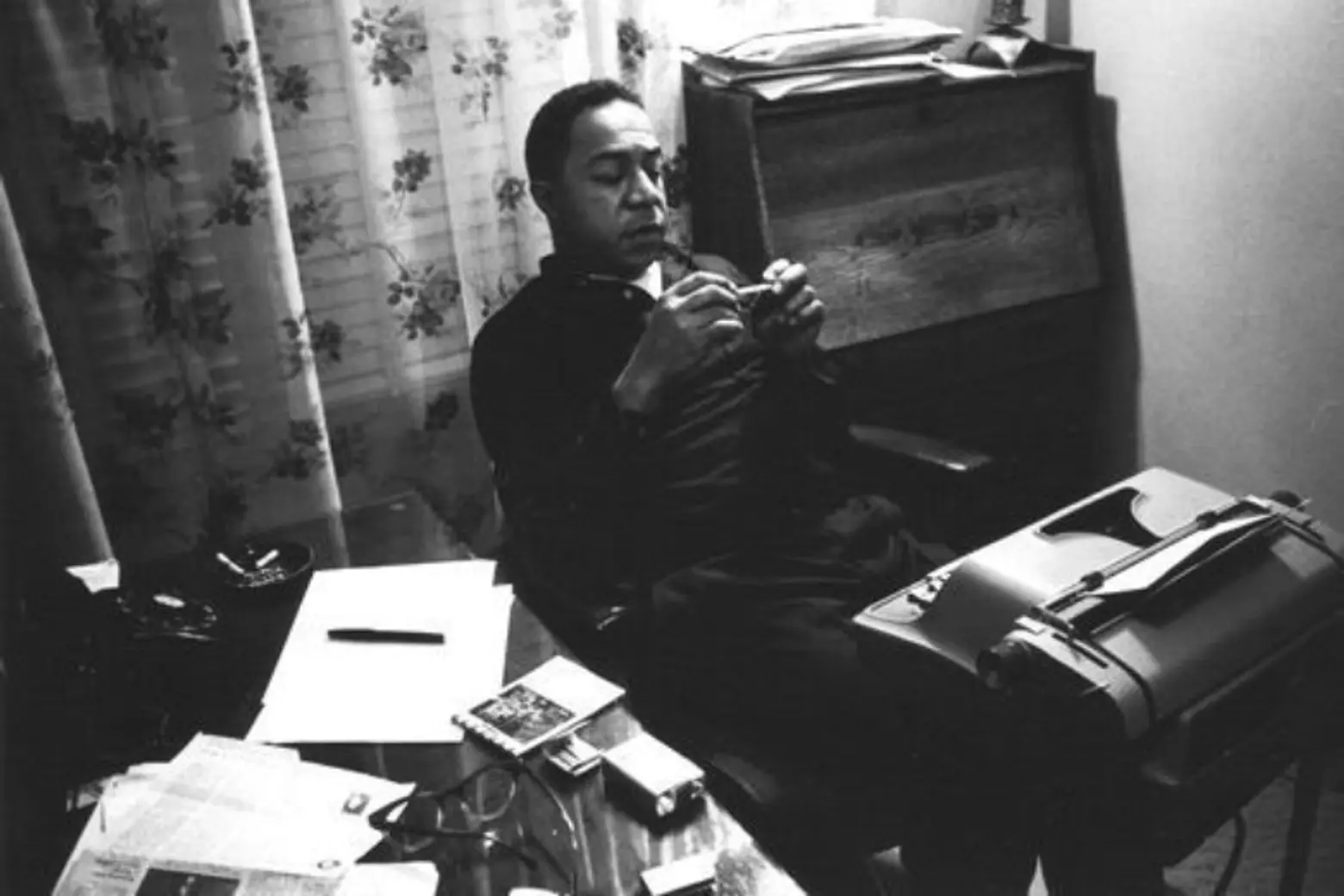
Alex Haley in his studio; Courtesy of Bill Haley via Public Radio International
13. Alex Haley Writing Studio
In the 1960s writer Alex Haley conducted over fifty interviews with Malcolm X in a writing studio he rented at 92 Grove Street, just off Sheridan Square, which would become the basis for the book The Autobiography of Malcolm X. In the 1970s, Haley would write the groundbreaking novel Roots, which was turned into a mini-series and became one of the most watched television productions in history.
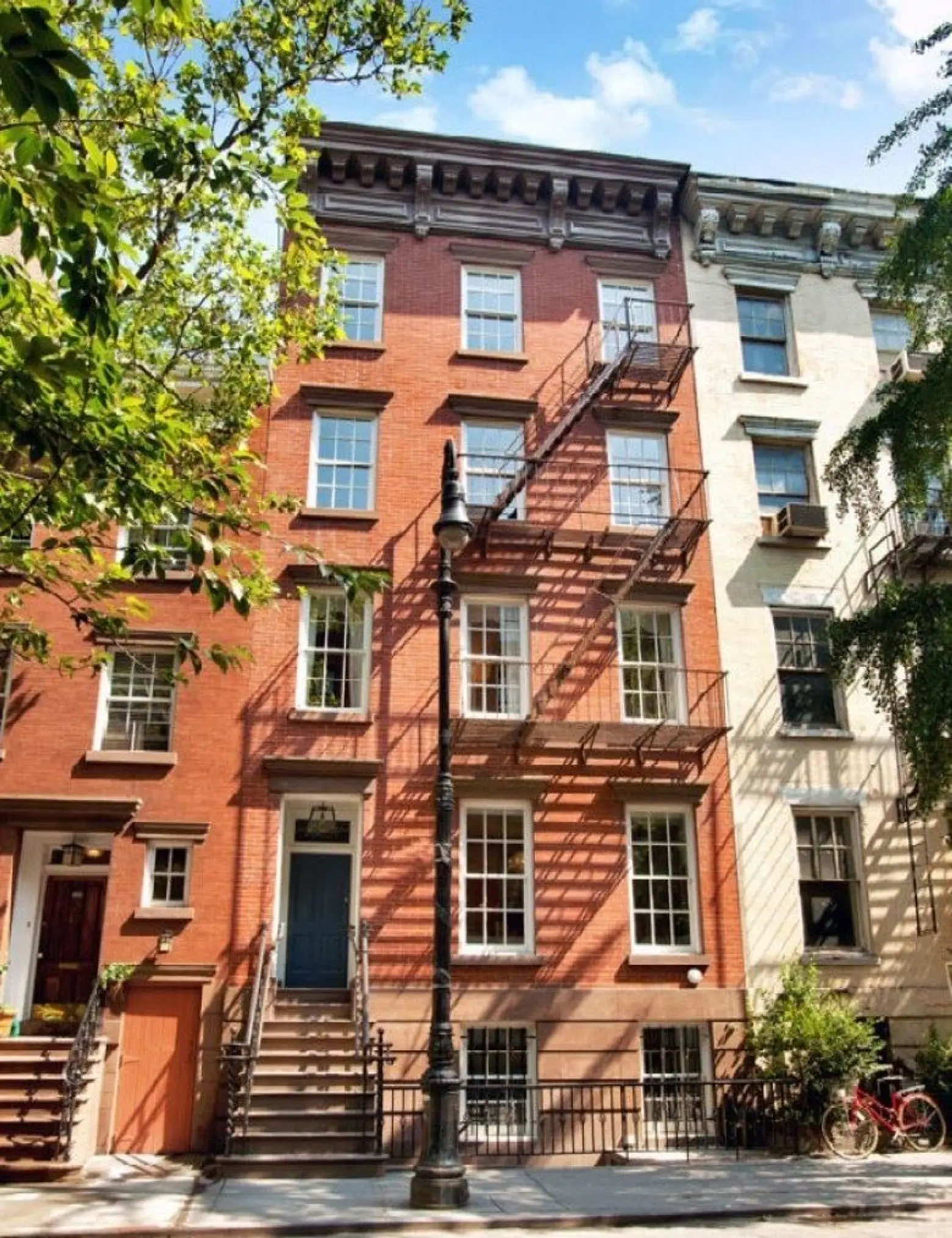
James Baldwin Residence at 81 Horatio Street; photo via GVSHP
14. James Baldwin Home
Writer and civil rights activist James Baldwin lived at 81 Horatio Street in the West Village during some of his most prolific years. Baldwin wrote of his time in Greenwich Village in “Notes of a Native Son,” among other pieces, and was a regular at Greenwich Village literary haunts like the San Remo Café on MacDougal Street.
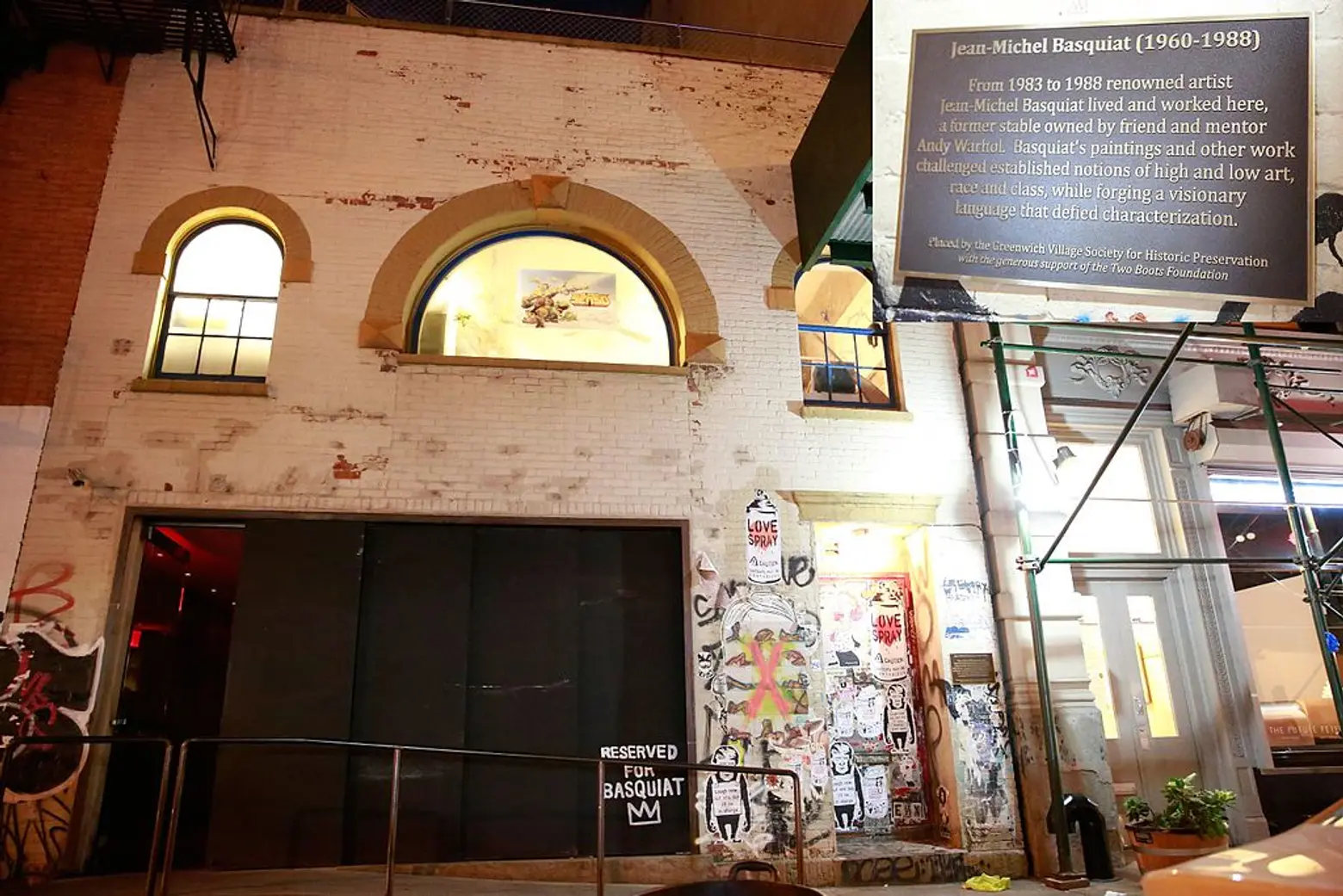
Jean-Michel Basquiat lived on Great Jones Street from 1983-1988; photo via Wikimedia
15. Jean-Michel Basquiat Studio
From 1983 until his death in 1987, artist Jean-Michel Basquiat lived and worked in a former stable located at 57 Great Jones Street, owned by his friend Andy Warhol. Basquiat, whose parents were from Haiti and Puerto Rico, was one of the first black artists to achieve his level of success in the art world; in 2017, his painting Untitled commanded $111 million at auction, the highest ever for an American artist. Basquiat’s work referenced issues of class and race and drew upon street art and graffiti art.
For more sites and information, see GVSHP’s Civil Rights and Social Justice Map.
+++
RELATED:
- 15 Underground Railroad stops in New York City
- John Jay’s new database provides 35,000+ records of slavery in New York
- On this day in 1645, a freed slave became the first non-Native settler to own land in Greenwich Village
- Before NYC’s Slave Market, Freedmen from Africa Were Allowed to Own Farmland
This post comes from the Greenwich Village Society for Historic Preservation. Since 1980, GVSHP has been the community’s leading advocate for preserving the cultural and architectural heritage of Greenwich Village, the East Village, and Noho, working to prevent inappropriate development, expand landmark protection, and create programming for adults and children that promotes these neighborhoods’ unique historic features. Read more history pieces on their blog Off the Grid.

